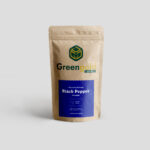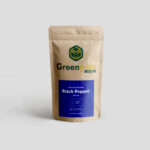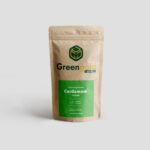Cardamom, often referred to as the “Queen of Spices,” is one of the most valued spices in the world, prized for its unique flavor, aroma, and numerous health benefits. 🌍✨ As the demand for cardamom continues to rise globally, it presents lucrative opportunities for farmers, traders, and entrepreneurs alike. However, like any business, the cardamom industry is not without its challenges. In this blog, we’ll explore the exciting business opportunities in the cardamom sector, the challenges that come with it, and how businesses can overcome these obstacles to succeed in this thriving industry. 💡📈
💼 Opportunities in the Cardamom Business
1. Global Demand for Cardamom
Cardamom is used in a variety of culinary applications, from Indian chai to Middle Eastern sweets and Scandinavian pastries, and it has gained popularity as a key ingredient in health and wellness products. 🌍 The global demand for cardamom is expanding, driven by its popularity in both food and beverages as well as its growing reputation as a natural remedy for various health issues.
- Global Market Growth: Cardamom is highly sought after in regions like the Middle East, South Asia, Europe, and even the United States. As a result, the demand for both green cardamom and black cardamom is on the rise. 🌍📈
- Diverse Uses: From cardamom-infused tea and coffee to cosmetic products and essential oils, cardamom’s versatility in various industries opens up numerous business opportunities. 🍵💆♀️
2. Exporting Cardamom
The global spice trade is a multi-billion-dollar industry, and cardamom is a key player in this market. Farmers and businesses can tap into international markets by exporting cardamom to countries that lack local production or have a high demand for the spice. 🌍✈️
- Export Growth Potential: As India, Guatemala, and Sri Lanka are the top producers of cardamom, there’s still significant potential to expand exports to untapped markets, especially in regions where cardamom’s culinary and medicinal properties are gaining attention. 🌎
- E-commerce Opportunities: With the rise of online marketplaces, even small-scale farmers and producers can now sell their cardamom directly to consumers across the globe. 🛒
3. Organic Cardamom Farming
There’s a growing preference for organic products due to health-conscious consumers seeking natural, chemical-free alternatives. Cardamom farming is no exception, and growing organic cardamom offers great business potential for those willing to invest in sustainable practices. 🌿
- Organic Certification: Organic cardamom can command higher prices in the market, offering a premium product that is attractive to both health-conscious consumers and ethical buyers. 🏅
- Sustainability and Branding: With the growing awareness of environmentally friendly farming practices, cultivating organic cardamom can help businesses create a strong brand image focused on sustainability. 🌱
4. Cardamom-based Products
In addition to selling whole or ground cardamom, there are numerous opportunities to create value-added products. These products can offer better profit margins and diversify income streams for cardamom businesses.
- Cardamom-Infused Beverages: Cardamom-infused products like tea, coffee, and hot chocolate have become popular, especially in the wellness sector. 🫖☕
- Beauty Products: With cardamom’s skin benefits, businesses can create essential oils, creams, scrubs, and lip balms, tapping into the lucrative beauty industry. 💆♀️💅
🚧 Challenges in the Cardamom Business
1. High Initial Investment
Starting a cardamom farm or business often requires significant capital investment. The land, equipment, labor, and other resources needed to grow cardamom can be expensive, making it challenging for new entrepreneurs to enter the market. 💰
- Land and Labor: Cardamom farming requires specific climatic conditions and skilled labor, which can result in high operational costs. Additionally, land preparation and infrastructure development can add to the upfront investment. 🌾👩🌾
2. Vulnerability to Climate Change
Cardamom plants thrive in tropical climates with consistent rainfall, but unpredictable weather patterns, including droughts, floods, and extreme temperatures, can negatively impact cardamom yields. 🌞🌧️
- Crop Failure Risks: A single year of poor weather conditions can result in crop failures, which can drastically reduce revenue for farmers and businesses. 🛑
- Sustainability Practices: To combat climate-related risks, businesses must implement sustainable farming practices and invest in climate-resilient crops and water management techniques to safeguard production. 🌍💧
3. Pest and Disease Management
Cardamom plants are susceptible to various pests and diseases, including cardamom wilt and root rot, which can devastate crops. Effective pest control requires careful monitoring, preventive measures, and often chemical treatments, which may not be suitable for organic farmers. 🐞🚫
- Labor-Intensive Control: Pest and disease management is time-consuming and requires skilled labor, adding to production costs. 🔬
- Organic Pest Control: For organic cardamom growers, managing pests without the use of synthetic chemicals can be a challenge and requires the use of biological control methods. 🌿
4. Market Price Fluctuations
The price of cardamom can fluctuate significantly due to factors such as weather conditions, harvest yields, and global demand. These price fluctuations can create uncertainty and make it difficult for farmers and businesses to plan financially. 📉📈
- Supply Chain Risks: Price fluctuations are especially problematic for exporters, who may find it difficult to predict profitability in uncertain markets. 🌍
- Market Competition: As demand for cardamom grows, more competitors enter the market, which can drive prices down, reducing profit margins. ⚖️
💡 Strategies to Overcome Challenges and Succeed in the Cardamom Business
1. Adopt Sustainable Practices
Emphasizing sustainability not only ensures that cardamom farming is environmentally responsible but can also help create a premium brand that attracts ethically-minded consumers. Organic certification and eco-friendly farming practices can help businesses differentiate themselves in the market. 🌱🌍
2. Invest in Technology
Leveraging precision farming tools, smart irrigation, and data analytics can help optimize farming practices, improve yields, and reduce operational costs. Technology can also assist with pest management, climate forecasting, and market trends. 📱🌾
3. Diversify Product Offerings
By offering value-added products like cardamom tea, essential oils, and beauty products, businesses can increase profit margins and appeal to a wider customer base. Product diversification is a great way to hedge against market price volatility. 💼🍃
4. Build Strong Relationships with Buyers
Establishing solid relationships with exporters, distributors, and retailers ensures a steady market for cardamom. Additionally, attending trade fairs and networking within the industry can open doors to new partnerships and sales channels. 🤝🌍
🌿 Conclusion
The business of cardamom presents both exciting opportunities and challenges. From the growing demand for cardamom in food, beverages, and wellness products, to the hurdles posed by climate change, pests, and price volatility, the industry offers substantial potential for growth and innovation. 💼
For entrepreneurs and farmers willing to invest in sustainable practices, technology, and market diversification, the rewards can be significant. By embracing the opportunities and tackling the challenges head-on, businesses can carve a niche for themselves in the thriving global cardamom market. 🌍✨












